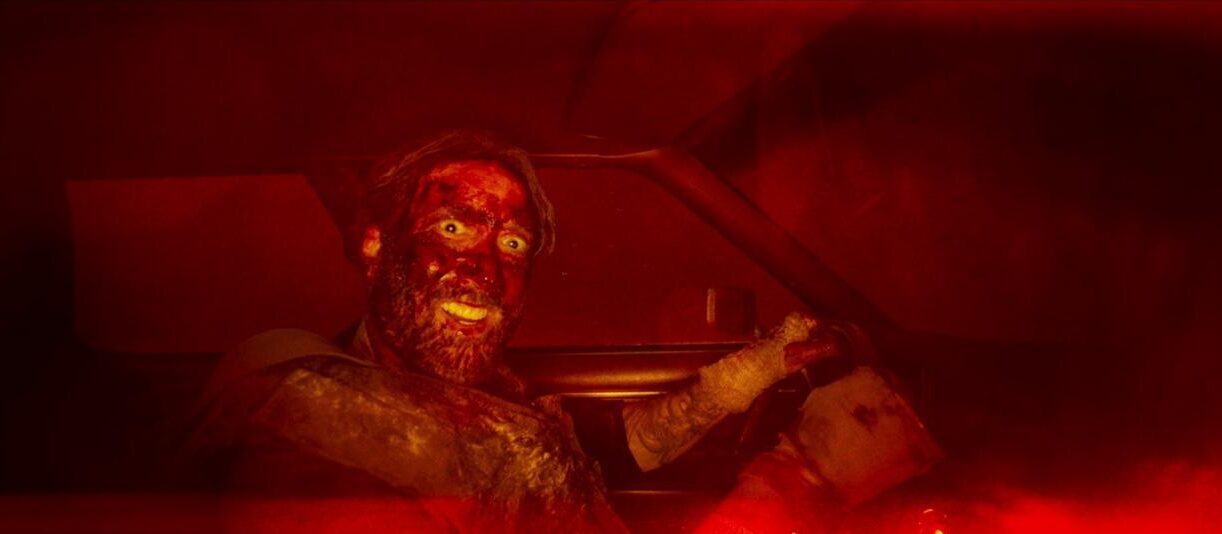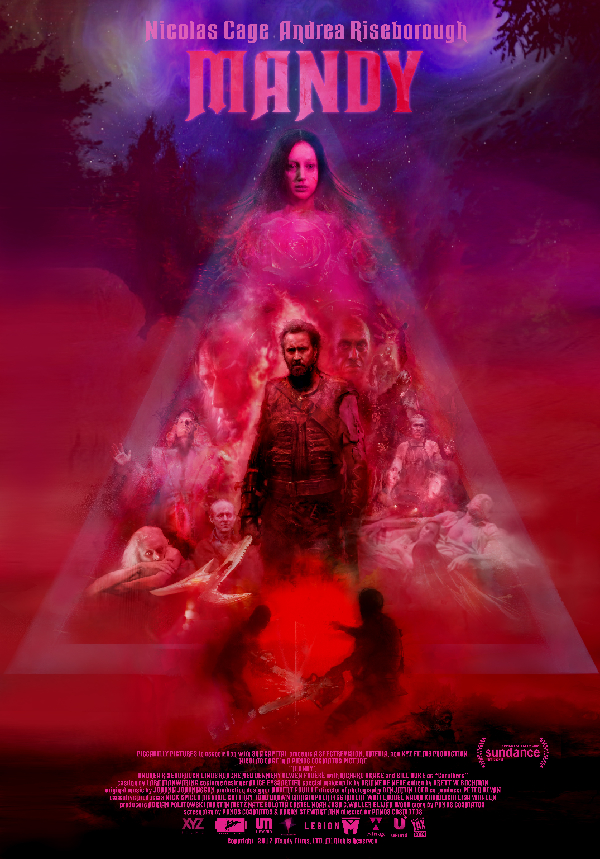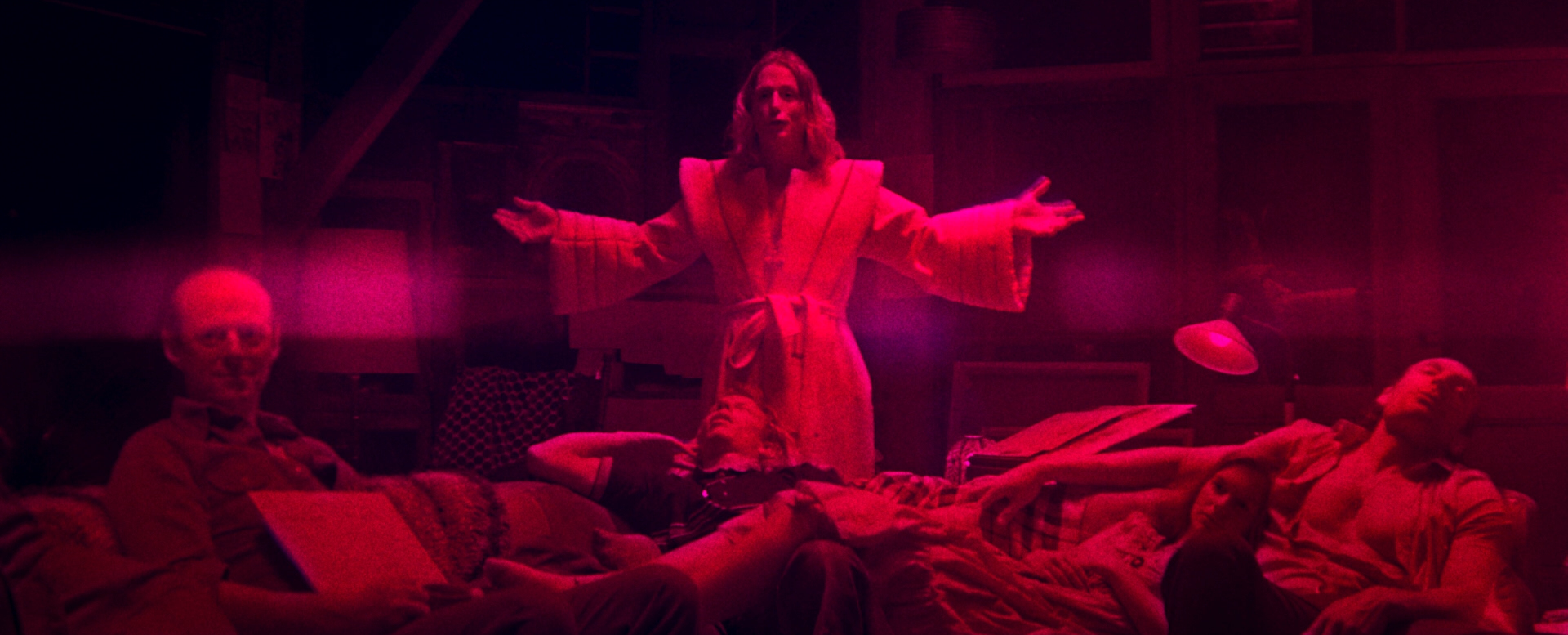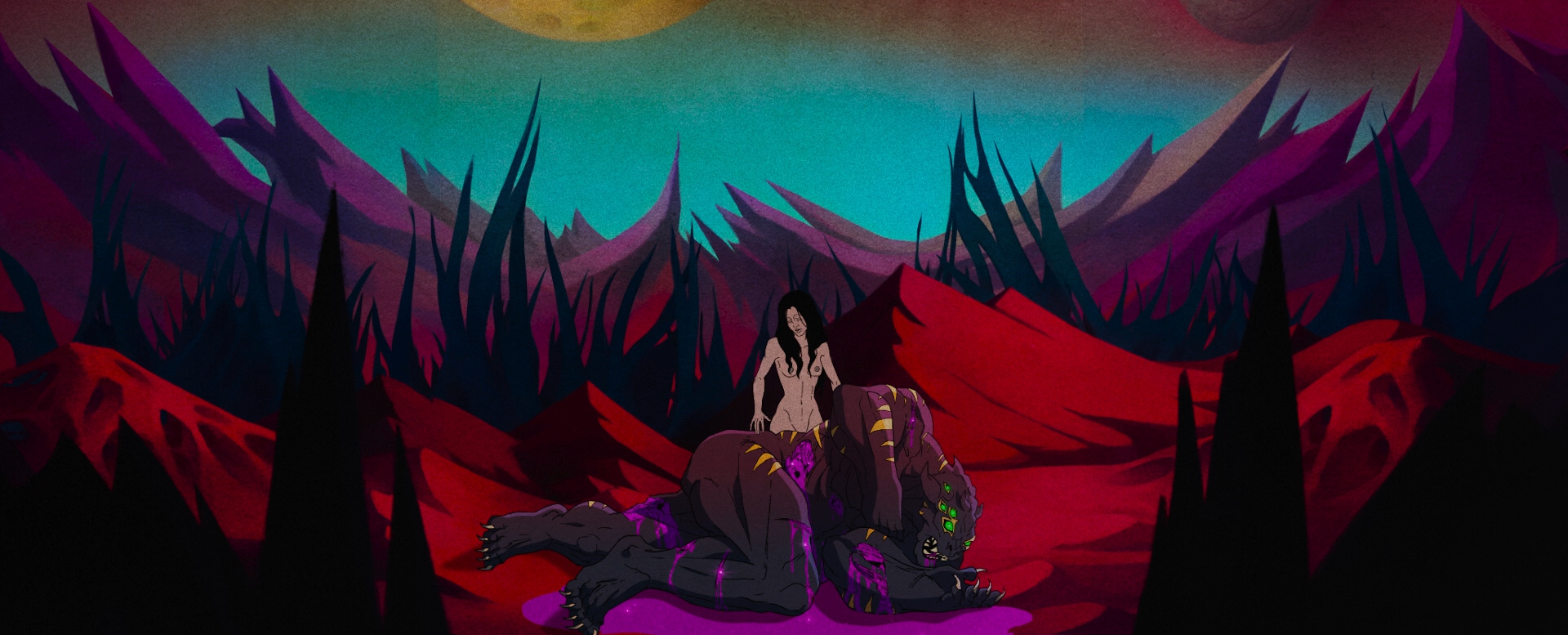

“A psychotic drowns where the mystic swims. You’re drowning. I’m swimming.”
There is a four-minute sequence near the two-thirds mark of Panos Cosmatos’ Mandy that signals its turn from atmospheric arthouse horror flick to madcap grindhouse extravaganza par excellence with points of reference few and far between. It also nutshells the appeal of the entire enterprise.
Hellbent on revenge for his titular girlfriend’s (Andrea Riseborough) ritualistic immolation at the hands of a New Age death cult called Children of the New Dawn, Red Miller (Nicolas Cage) has fumbled his way into the base of operations of the devil-worshiping biker gang that initially kidnapped her at the behest of failed folk musician cum hippie cult master Jeremiah Sands (Linus Roache). He sneaks up on one of the sadomasochistic brutes—which is something like a cross between the Cenobites from Hellraiser and the Uruk-hai from The Lord of the Rings—and after a brief struggle, slits its throat with a box cutter, unleashing a torrent of blood that squirts all over his face and into his laughing mouth.
In the aftermath, as he considers the lofi porno illuminating the grungy living room in which he’s just taken a life, a shotgun blast blows a hole in the television screen. “You ripped my shirt!” he yells, twice, when he recognizes the savage devil that had recently nailed his hand to the floor and is now aiming a loaded weapon at him. (This repeated line, which smacks of Cage-as-a-meme in the best way possible, is one of several instances where one wonders just how far in advance Cosmatos knew he was getting the polarizing actor as his lead.) After dispatching this second agent of darkness via neck snap, Red discovers a nearby mound of cocaine and takes a big ol’ sniff off a shard of glass.

Then—and we’re still within our four minutes of reeltime here, folks—he relocates the mystical battle ax that he forged with his own hands specifically for this retributive mission, as well as the tactical crossbow he affectionately referred to as The Reaper when he retrieved it from his friend Caruthers (Bill Duke)—who, in addition to equipping his vengeance-minded pal with arrows that “cut through the bone like a fat kid eats cake,” provided information about the evil biker gang, namely that the source of their wanton depravity was a tainted batch of LSD. So, having recollected his weapons, what is Red to do but set them back down amongst the fast food wrappers and condiment bottles so that he can dip his fingers into an unmarked jar of gray sludge that immediately triggers visions of face-melting apocalyptica?
While this episode encapsulates what makes Mandy a superlative genre film, it by no means exhausts its riches. Where Cosmatos’ debut, 2010’s Beyond the Black Rainbow, was a bold experiment in lackadaisical psychedelia tinged with mounting dread that frustrated some critics with its slow pace, Mandy is comparatively unrestrained and exuberant, exhibiting extreme tendencies in its use of sound—metallic drones from Jóhann Jóhannsson, King Crimson’s ‘Starless’, distorted voices, exaggerated crunches and gurgles—and image—bold primary colors, stupefying strobe lights, cross dissolves, freeze frames, slow motion, out-of-focus shots, long exposure photography, animated sequences, and even a peculiar blending of two human faces à la Ingmar Bergman’s Persona.

Separated into three distinct movements, Mandy comes complete with a pulpy story and characters, but it is primarily interested in using its meticulously crafted hypnagogic aesthetic to convey primitive states of emotion (Cosmatos has likened the film to a rock opera). Rage is the centerpiece, but also featured and undergirded by intuitive filmmaking are sorrow, regret, unease, disgust, and so on. Cage, drawing on his metatextual persona, is the perfect match to such material with his amplified mannerisms, wide eyes, and devilish grin. There’s a magnificent long take where he screams and cries alone in a bathroom with a bottle of vodka. Also—and it’s quite possible to miss this amidst the chainsaws, gallons of blood, melting faces, skull crushing, etc.—Cage is superbly matched to the campy dialogue, which he accents with all sorts of memorable touches, both sincere and outrageous. The humor in general (e.g. the wonderful fake ad for Cheddar Demon Macaroni & Cheese) is a smart counterpoint to the primary offering of sensory assault.
David Lynch is a cliché touchstone, but his daydream-intuitive narrative style and potent imagery provide the closest thing to a cipher for Pan Cosmatos’ astounding sophomore effort.